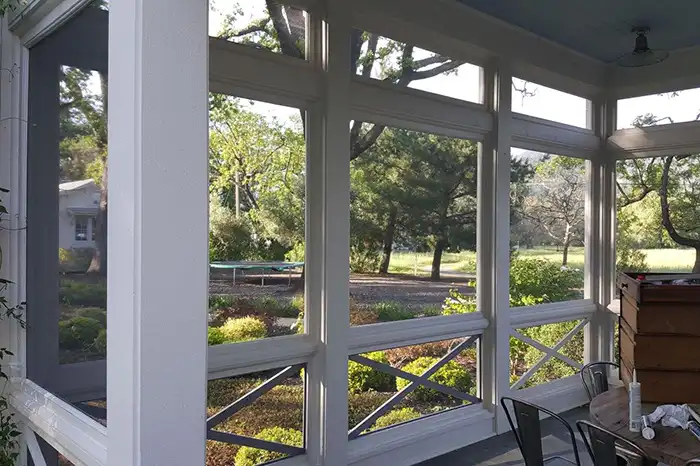How to Choose the Right Screen Enclosure for Your Patio or Pool
A screen enclosure is an excellent addition to any patio or pool area, providing protection from bugs, debris, and harsh weather while enhancing your outdoor living experience. Whether you’re looking to create a shaded retreat or a fully enclosed space for year-round enjoyment, choosing the right screen enclosure is crucial. Here’s a comprehensive guide to help choose the right screen enclosure.
1. Determine Your Primary Purpose
Before selecting a screen enclosure, consider why you need it. Different enclosures serve different purposes, including:
- Bug and Pest Protection – Keeps mosquitoes, flies, and other insects out.
- Debris Control – Prevents leaves and dirt from entering the pool or patio.
- Weather Protection – Shields against wind, rain, and UV rays.
- Privacy – Offers seclusion from neighbors and passersby.
- Safety and Security – Adds an extra layer of protection for children and pets.
Once you determine your main goal, you can narrow down the best type of enclosure for your needs.
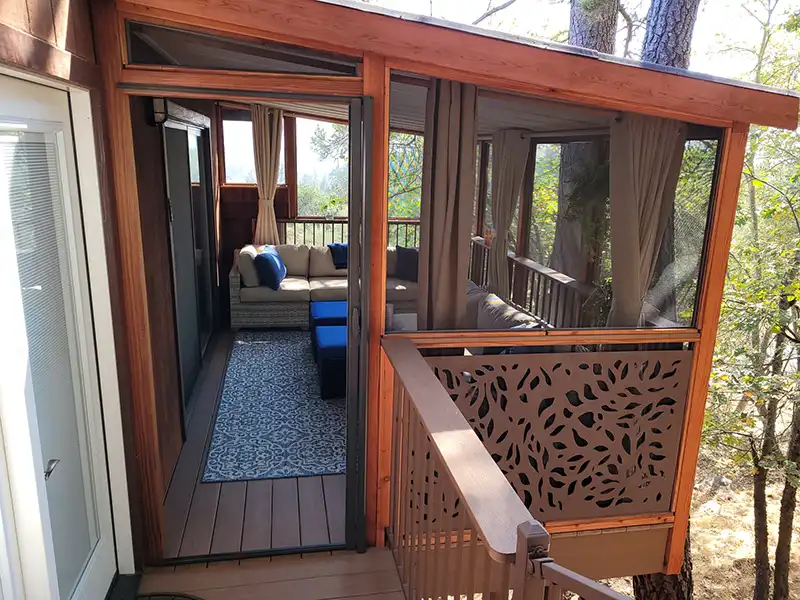
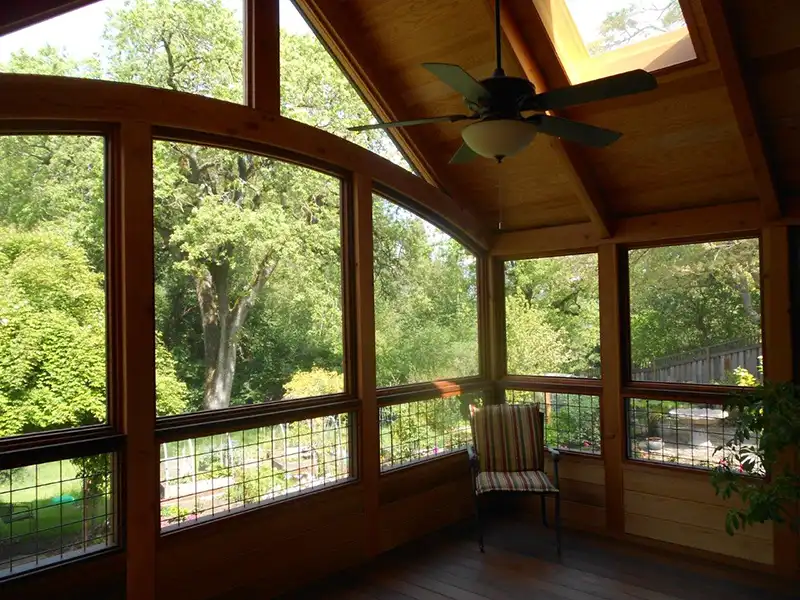
2. Choose the Right Type of Screen Enclosure
There are several types of screen enclosures available, each with its own advantages:
- Screen Rooms – Ideal for patios, decks, and porches, these structures have a solid roof and screened walls for year-round use.
- Pool Cages – Specifically designed for pools, these enclosures keep insects and debris out while allowing fresh air in.
- Lanai Enclosures – A screened-in space attached to a home, commonly found in tropical climates.
- Retractable Enclosures – Provide flexibility by allowing you to open or close the enclosure depending on the weather.
- Three-Season Rooms – Enclosed spaces with durable screens or glass panels, offering more protection than standard screen enclosures.
3. Select the Right Frame Material
Screen enclosures come in different materials, and choosing the right one is essential for durability and aesthetics:
- Aluminum – Lightweight, rust-resistant, and durable, making it the most popular choice.
- Vinyl – Offers a sleek appearance with minimal maintenance requirements.
- Wood – Provides a natural look but requires regular upkeep to prevent rot and insect damage.
- Steel – Strong and durable but prone to rust if not properly maintained.
4. Pick the Best Screen Material
The type of screen you choose impacts the longevity and functionality of your enclosure:
- Fiberglass Screens – Affordable, flexible, and resistant to corrosion but not as strong as other materials.
- Aluminum Screens – More durable than fiberglass, with excellent resistance to corrosion and tearing.
- Pet-Resistant Screens – Thicker and stronger, designed to withstand scratches from pets.
- Solar Screens – Help reduce heat and UV rays, making them ideal for hot climates.
- Privacy Screens – Offer additional privacy by limiting visibility from the outside.
5. Consider the Design and Aesthetic Appeal
Your screen enclosure should complement the design of your home and outdoor space. Consider:
- Roof Style – Options include gable, hip, flat, or domed roofs.
- Color and Finish – Select a color that blends seamlessly with your home’s exterior paint color.
- Size and Shape – Customize the enclosure to fit your patio or pool area perfectly.
- Door Options – Choose from sliding, hinged, or self-closing doors for convenience and accessibility.
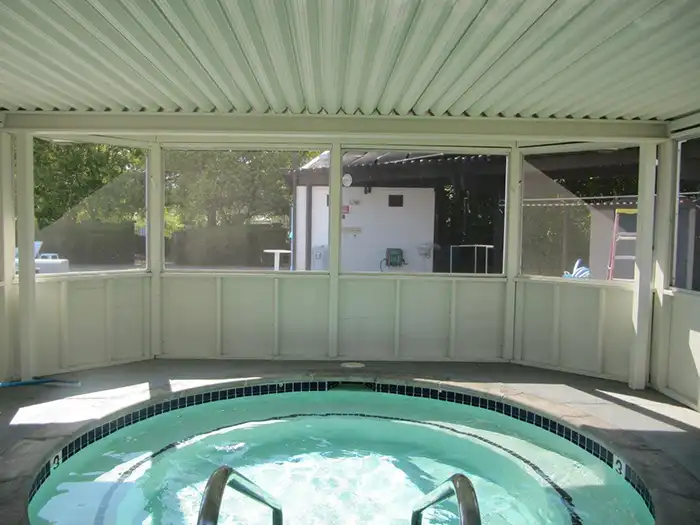
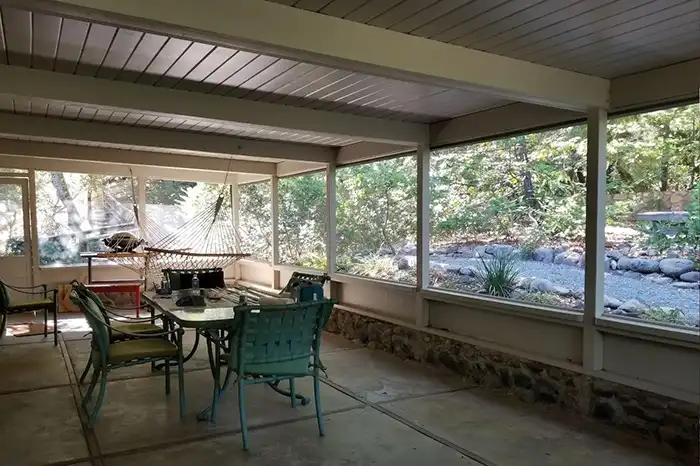
6. Evaluate Weather and Climate Factors
Your local climate plays a significant role in determining the best screen enclosure for your home:
- High Winds and Hurricanes – If you live in an area prone to strong winds, opt for a reinforced structure with hurricane-resistant screens and aluminum framing.
- Heavy Rainfall – Ensure proper drainage and waterproofing features to prevent water accumulation.
- Extreme Heat and Sun Exposure – Use solar screens or tinted materials to reduce heat and glare.
- Cold Climates – Consider a three-season room or insulated enclosure for year-round use.
7. Budget and Installation Costs
Screen enclosures vary in cost depending on size, material, and design. Keep the following in mind:
- Material Costs – Aluminum and fiberglass are cost-effective, while wood and steel tend to be more expensive.
- Labor and Installation Fees – Hiring a professional ensures proper installation but adds to the overall cost.
- Customization Expenses – Custom designs, additional doors, or special features may increase the price.
- Long-Term Maintenance – Factor in costs for repairs, cleaning, and possible replacements over time.
8. Professional Installation vs. DIY
While some homeowners opt for DIY screen enclosure kits, hiring a professional is often the best choice for durability and safety. Professionals ensure:
- Proper structural integrity
- Compliance with local building codes
- High-quality materials and finishes
- Faster and more efficient installation
9. Check Local Building Codes and Permits
Before installing a screen enclosure, check your local regulations. Some areas require permits or have restrictions on enclosure height, materials, or proximity to property lines. Working with a licensed contractor can help ensure compliance with all necessary codes.
10. Think About Future Upgrades
Plan ahead by considering features that could enhance your screen enclosure in the future:
- Motorized Screens – Allow you to raise or lower screens with the touch of a button.
- Lighting and Fans – Improve comfort and usability, especially for nighttime gatherings.
- Heating Elements – Extend the use of your enclosure during colder months.
- Decorative Features – Add curtains, planters, or outdoor furniture to personalize the space.
Conclusion
With this information, you can now choose the right screen enclosure for your patio or pool including careful consideration of purpose, materials, design, and budget. By understanding your needs and exploring the various options available, you can create a comfortable, stylish, and functional outdoor space that enhances your home’s value and lifestyle. Whether you prefer a simple bug-free patio or a luxurious, all-weather enclosure, the right choice will provide years of enjoyment and protection. Get in touch with the pros at All Screens for all your screen enclosure needs!
